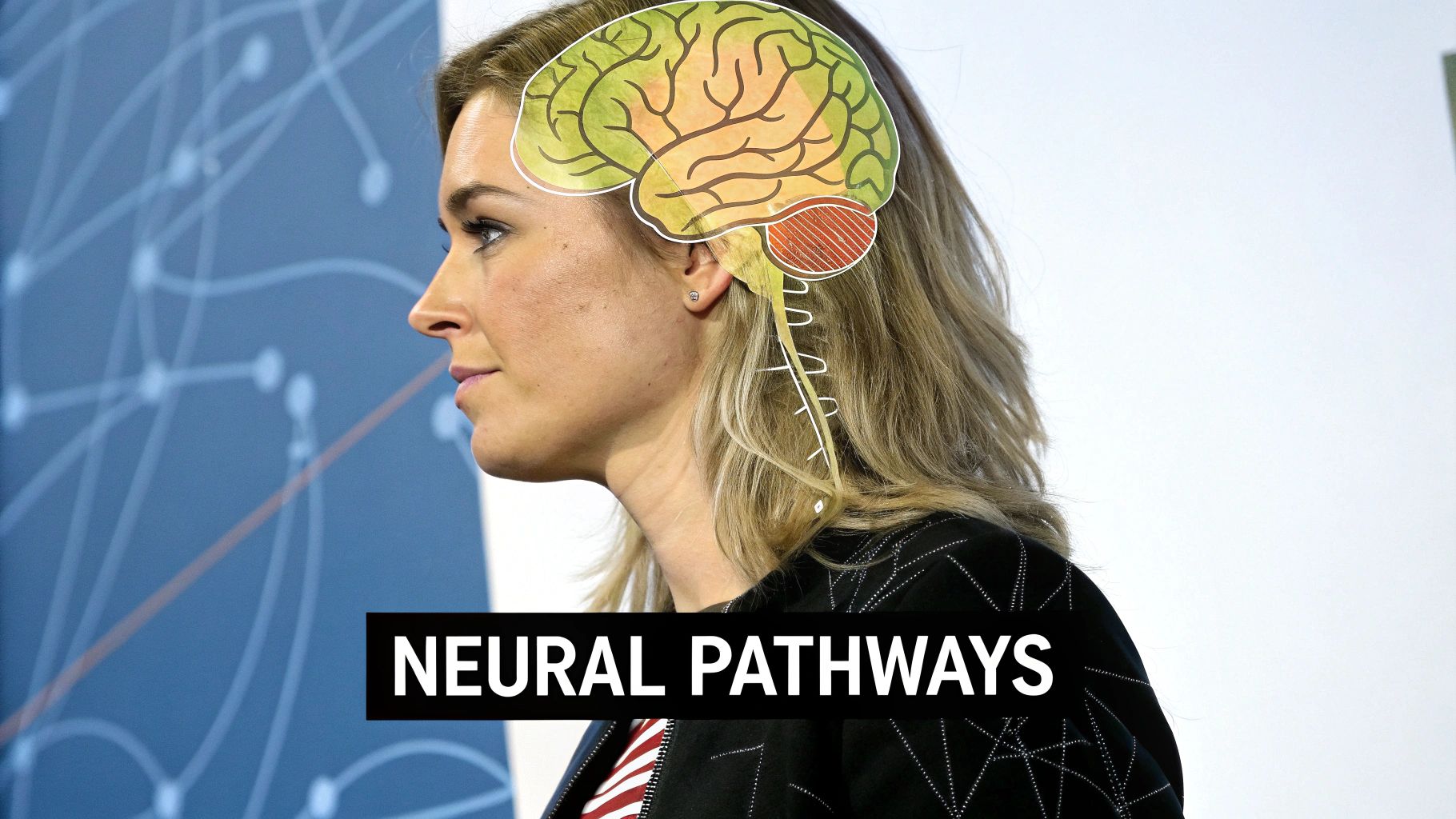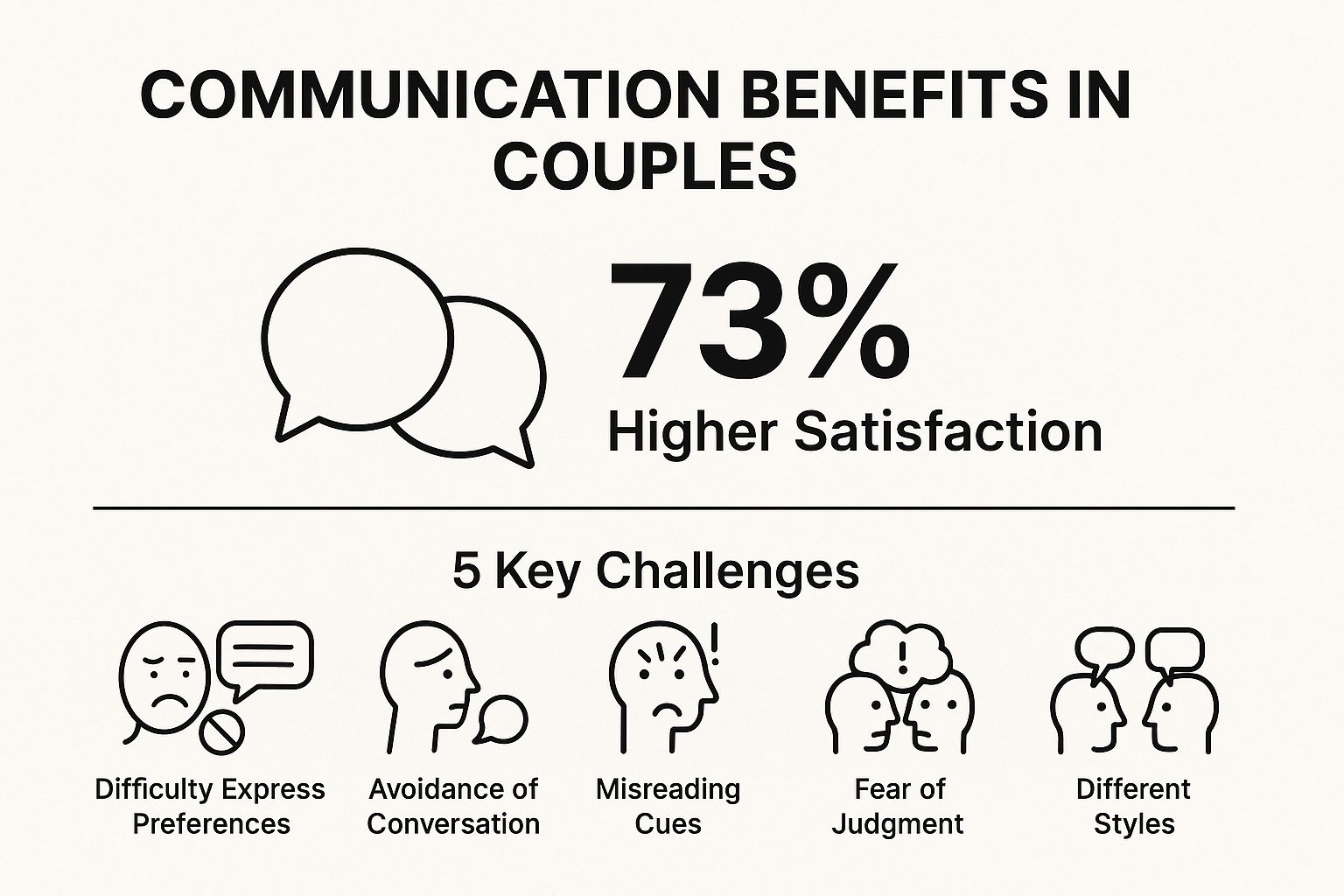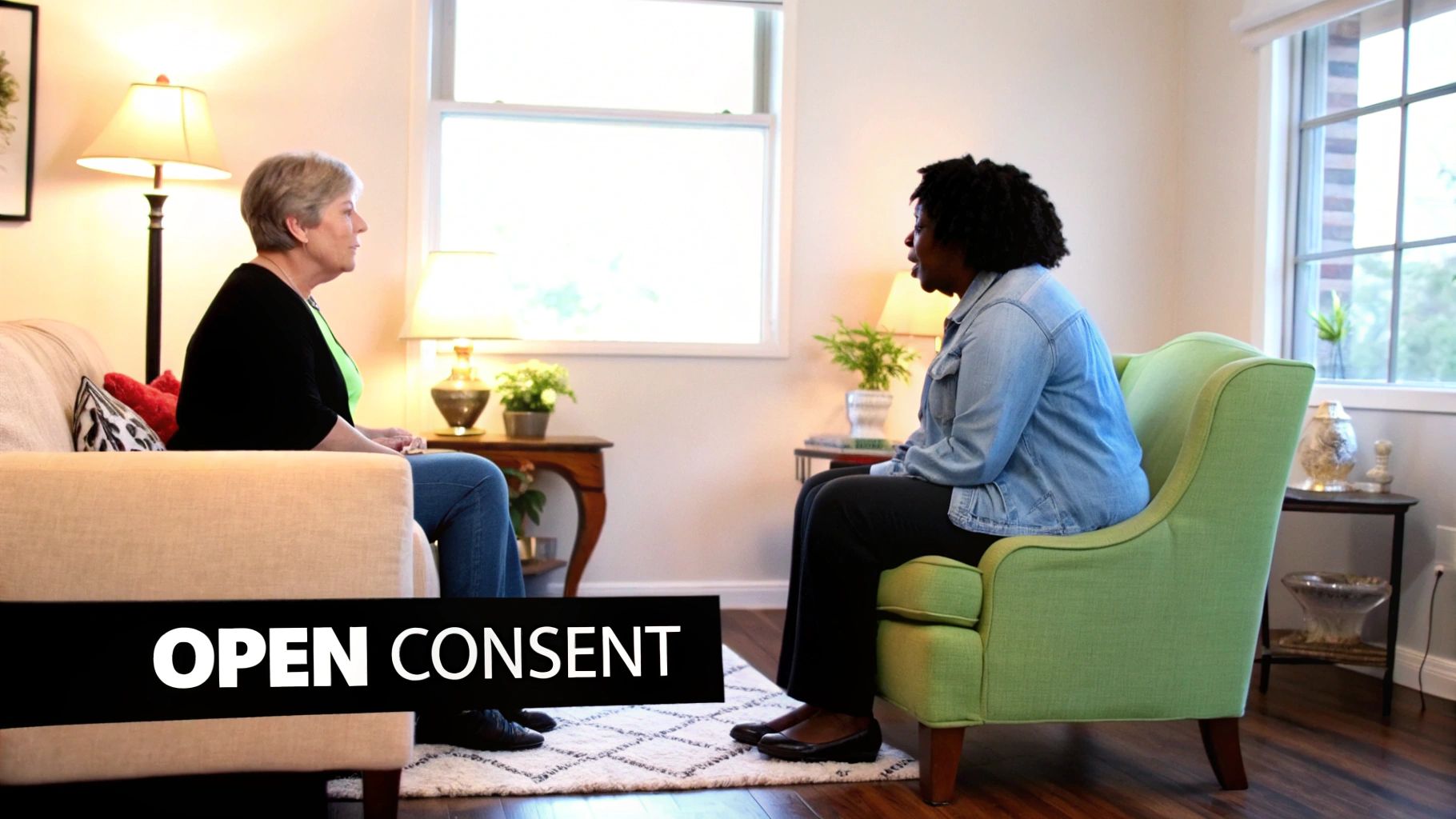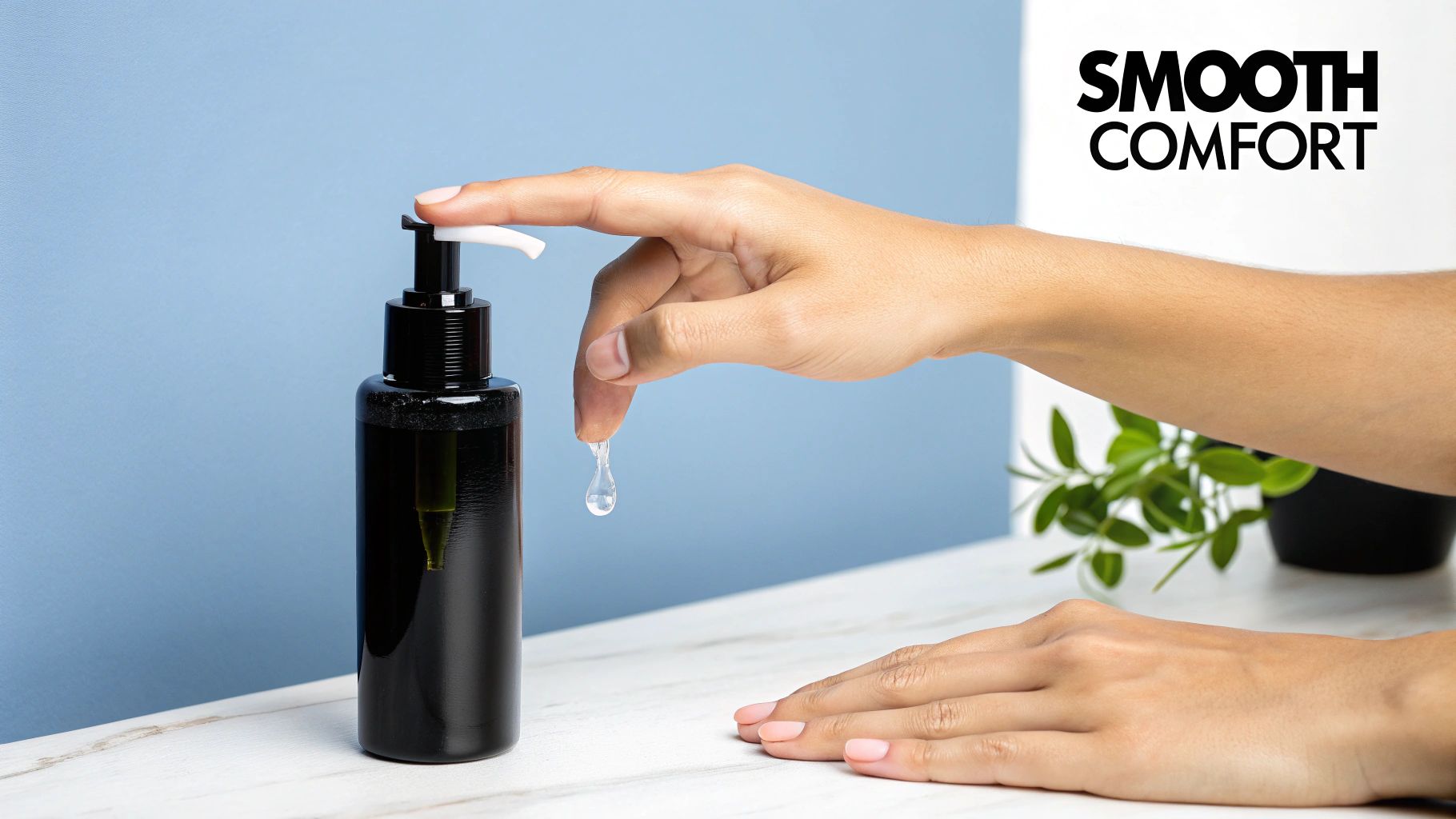Top Tips for Giving Good Head That Boost Pleasure

Unlocking the Art of Oral Sex: A Pleasure-Focused Guide
Want to give amazing oral sex that leaves your partner breathless? This guide delivers seven essential tips for giving good head and creating unforgettable pleasure. Learn how mindful eye contact, varied rhythms, enthusiastic communication, and full-body engagement can elevate oral sex from good to extraordinary. Mastering these techniques empowers you to deepen intimacy and unlock new levels of connection, so dive in and discover the art of truly satisfying your partner.
1. Practice Mindful Eye Contact and Energy Connection
When it comes to giving good head, many focus solely on the physical techniques. However, a truly unforgettable experience transcends the physical and delves into the realm of emotional connection. This is where the power of mindful eye contact and energy connection comes into play. This technique involves maintaining gentle, yet confident eye contact with your partner while remaining fully present and engaged in the moment. It’s about creating a shared experience, a silent dialogue that speaks volumes about your desire and intention. This connection transforms the act from a purely physical one into a deeply intimate exchange, amplifying pleasure and forging a stronger bond between partners.

Think of it this way: you could be technically proficient, hitting all the right spots, but without that spark of connection, something crucial is missing. Eye contact bridges that gap. It’s a non-verbal form of communication that speaks directly to your partner’s subconscious, conveying confidence, desire, and genuine appreciation for their body. This shared gaze creates a feedback loop, allowing you to gauge their reactions and adjust your approach accordingly. Are they leaning in, eyes slightly closed in pleasure? Or are they looking away, perhaps a sign to adjust your technique? These visual cues are invaluable in tailoring the experience to their specific needs and desires.
For example, imagine you’re starting to perform oral sex. Instead of immediately focusing downwards, take a moment to meet your partner’s gaze. Hold their eyes for a few seconds, letting a gentle smile play on your lips. This simple act establishes a connection, setting the stage for a more intimate encounter. As you continue, periodically glance up, maintaining that connection and silently communicating your enjoyment. You’ll likely find that this intensifies the experience for both of you. Another successful implementation might be holding their gaze while you’re teasing them, building anticipation and adding an element of playful dominance.
So, how can you effectively incorporate this technique into your lovemaking? Here are some actionable tips for giving good head using mindful eye contact:
- Start slow: If you’re not used to prolonged eye contact, start with brief glances and gradually increase the duration as you become more comfortable.
- Practice outside the bedroom: Building confidence with eye contact in everyday situations will make it feel more natural during intimate moments. Try holding someone’s gaze during a conversation or when passing someone on the street.
- Read their body language: Not everyone is comfortable with intense eye contact. Pay attention to your partner’s cues. If they seem uncomfortable or avert their gaze, ease up and focus more on other forms of connection.
- Combine with a smile: A genuine smile can soften the intensity of the gaze and communicate enjoyment, making the experience more pleasurable for both of you.
- Vary your approach: Don’t be afraid to experiment. Sometimes a smoldering gaze can be incredibly arousing, while other times a playful glance can be just as effective.
This approach deserves its place on this list because it elevates the experience of giving good head from a physical act to an art form. The benefits are numerous:
Pros:
- Deeper emotional connection: Eye contact fosters intimacy and creates a shared experience, strengthening the bond between partners.
- Increased arousal and engagement: The added element of emotional connection can significantly heighten your partner's pleasure.
- Demonstrates confidence and intentionality: Maintaining eye contact shows your partner that you’re fully present and invested in their pleasure.
- Creates memorable intimate moments: These shared moments of intense connection can become cherished memories, further strengthening your relationship.
Cons:
- Can feel intimidating for beginners: If you’re not used to prolonged eye contact, it can feel awkward or uncomfortable at first.
- May be too intense for some partners: Not everyone enjoys intense eye contact, so it's crucial to be sensitive to your partner's preferences.
- Requires confidence to maintain naturally: Forced eye contact can feel unnatural and uncomfortable, so it’s important to practice and build your confidence.
By mastering the art of mindful eye contact and energy connection, you can transform the act of giving good head into a deeply fulfilling and intimate experience for both you and your partner. It takes practice and sensitivity, but the rewards are well worth the effort. This technique isn’t just about improving your technique; it's about creating a powerful connection that transcends the physical and touches the soul.
2. Master Varied Rhythm and Pressure Techniques
Giving amazing oral sex isn't about a single magic move; it's about creating a symphony of sensations. This means understanding the power of variety in rhythm and pressure. Effective technique focuses on building anticipation and pleasure by shifting between different tempos, pressures, and movements, constantly responding to your partner's cues. Instead of sticking to one predictable pattern, think of it as a dynamic dance where you're leading, but also listening and adapting to your partner's responses. This personalized approach is key to unlocking truly mind-blowing pleasure.

Think about it: constant, unchanging stimulation, no matter how initially pleasurable, eventually leads to desensitization. The body becomes accustomed to the input and the sensation dulls. By varying the rhythm and pressure, you prevent this plateau and keep the experience exciting. A slow, gentle lick can build anticipation, followed by a firmer, faster rhythm to heighten the pleasure. Alternating between these creates a wave of sensation that keeps your partner on the edge.
This technique deserves its place on this list because it transforms oral sex from a good experience into a truly great one. It’s about taking the time to understand your partner’s body and responding to their unique reactions. The features of this technique include dynamic pressure variation (from feather-light touches to firmer pressure), rhythm changes (from slow, teasing licks to faster, more intense movements), alternating between different movements (like licking, sucking, and using your tongue tip), and, crucially, responsive adjustment based on your partner’s feedback.
Here are some examples of successful implementation: Begin with slow, teasing licks, gradually increasing the pressure as you sense your partner's arousal building. Then, switch to a faster rhythm, focusing on the areas that elicit the most positive responses. You might incorporate gentle suction, varying the intensity to further heighten the sensation. Notice how your partner’s body reacts – are they arching their back? Are their breaths getting shorter? These are clues that you're on the right track.
To truly master this technique, consider these actionable tips:
- Start Slow and Gradually Increase Intensity: Begin with gentle, teasing touches and gradually build up the pressure and speed as you gauge your partner’s response.
- Pay Attention to Your Partner's Breathing and Body Language: Their breathing, moans, and body movements are your guide. Are they breathing faster? Are they moving towards you or pulling you closer? These are signs of enjoyment.
- Ask for Feedback: Don’t be afraid to ask your partner what feels good. Open communication is key to a truly satisfying experience for both of you.
- Practice the 'Tease and Please' Approach: Alternate between building intensity and then easing off, creating waves of pleasure that heighten the overall experience.
While the benefits of varied rhythm and pressure are immense—preventing desensitization, building anticipation, allowing for customization, and creating more engaging experiences—there are a few potential challenges. It requires practice to master the timing and transitions between different pressures and rhythms. Changing things up too frequently can be overwhelming for your partner, so finding the right balance is crucial. Finally, it may take time and communication to truly learn your partner’s preferences. But the rewards are well worth the effort.
Learn more about Master Varied Rhythm and Pressure Techniques for more in-depth tips and techniques to take your oral sex game to the next level. By incorporating varied rhythm and pressure, you're not just giving good head; you're creating an experience that’s both personalized and unforgettable, leaving your partner wanting more. Mastering these techniques is a valuable skill for any man who wants to understand and please his partner.
3. Prioritize Enthusiastic Communication and Consent
Giving good head isn't just about technique; it's about connection, pleasure, and shared intimacy. A crucial element of this is prioritizing enthusiastic communication and consent, both before, during, and after the act. This open dialogue ensures both partners feel comfortable, respected, and ultimately, more satisfied. It moves the experience from a potentially awkward or one-sided act to a collaborative exploration of pleasure. By establishing clear communication channels, you create a space where desires can be expressed freely, boundaries are respected, and both individuals feel empowered to actively participate in shaping the experience. This is why open and enthusiastic communication deserves a prominent place on this list of tips for giving good head.

This communication involves discussing preferences and boundaries. What does your partner enjoy? Are there any hard limits? What feels good to them? This doesn’t have to be a formal sit-down discussion. It can be integrated into your foreplay, whispered in the heat of the moment, or playfully explored through experimentation. Ongoing verbal and non-verbal check-ins are also essential. A simple "Does this feel good?" or "Do you like it when I…?" can go a long way in ensuring your partner's comfort and maximizing their pleasure. Pay attention to their body language as well. Are they moaning, arching their back, or pulling you closer? These are all signs of enjoyment. Conversely, if they seem tense, pull away, or become quiet, it's a cue to adjust your approach or check in verbally.
Creating safe words or signals can also be incredibly beneficial. This allows your partner to easily communicate if something becomes uncomfortable or if they want to change things up without having to interrupt the flow. This pre-agreed upon communication method helps avoid any potential misunderstandings and allows for a quick and clear shift in the dynamic. Post-intimacy feedback and appreciation can further strengthen the connection and enhance future encounters. Sharing what you enjoyed and asking for feedback from your partner creates a positive feedback loop, fostering deeper intimacy and understanding.
One of the most significant benefits of prioritizing communication is the enhanced comfort and safety it provides for both partners. It builds trust and emotional intimacy, creating a deeper connection beyond the physical act. By understanding each other's preferences and boundaries, you're able to tailor the experience to maximize pleasure and minimize any potential discomfort. This, in turn, leads to better experiences through clearly expressed preferences. When you know what your partner likes, you can focus on delivering that pleasure, reducing anxiety and performance pressure.
While the benefits are numerous, it's important to acknowledge the potential challenges. For some couples, initiating these conversations might feel awkward initially. It requires vulnerability and openness, which can be challenging for some. If not done naturally, it can also interrupt the spontaneity of the moment. However, with practice and a willingness to be open and honest, these initial hurdles can be easily overcome. The rewards of enhanced intimacy, pleasure, and connection far outweigh any initial discomfort.
Here are some actionable tips to integrate enthusiastic communication into your intimate moments:
- Have conversations outside the bedroom first: This can help ease into the topic and make it feel less daunting. Discuss your general preferences and boundaries, creating a foundation for open communication.
- Use positive language and express what you enjoy: Focus on what feels good and what you want more of. This positive reinforcement encourages your partner and creates a more pleasurable experience for both of you.
- Create non-verbal signals for 'more' or 'different': This can be a subtle squeeze, a change in breathing, or any other pre-agreed upon signal. This allows for communication without interrupting the flow of the moment.
- Express appreciation and enthusiasm verbally: Let your partner know how much you enjoy pleasuring them. This reinforces their efforts and enhances the shared intimacy.
If you’re looking for exercises to improve communication as a couple, learn more about Prioritize Enthusiastic Communication and Consent. Remember, giving good head is a skill that improves with practice and communication. By prioritizing enthusiastic consent and open dialogue, you can transform the experience from a purely physical act to a deeply intimate and pleasurable connection. By incorporating these tips, you're not just giving good head; you're building a stronger connection and creating a more fulfilling experience for both of you.
4. Focus on Full-Body Engagement and Sensory Experience
Giving amazing oral sex isn't just about the main event; it's about creating a holistic experience that tantalizes all the senses and leaves your partner breathless. This means moving beyond a singular focus and embracing full-body engagement. Think of it as conducting a symphony of pleasure, where your mouth plays the lead, but your hands, breath, and even the surrounding ambiance contribute to a crescendo of sensation. This approach elevates oral sex from a localized act to an immersive, full-body experience.

Rather than solely concentrating on the clitoris, incorporating multi-point stimulation dramatically amplifies the experience. While your mouth works its magic, your hands can explore and caress other erogenous zones. Imagine one hand gently teasing her nipples while the other glides along her inner thigh, creating a delicious contrast in textures and sensations. This not only diversifies the pleasure but also demonstrates your attentiveness to her entire body, showing her that you're invested in her overall pleasure, not just a single area. Incorporating varied sensations like gentle breath or temperature play – a warm exhale against her clitoris, a cool touch on her inner thighs – can further heighten the experience.
Think beyond the obvious erogenous zones. While the clitoris, breasts, and inner thighs are key players, don't underestimate the power of touch elsewhere. A light caress along her stomach, a gentle squeeze of her hip, or even running your fingers through her hair can add unexpected layers of pleasure. These seemingly small gestures demonstrate your awareness of her as a whole being, making the experience feel more intimate and connected. This holistic approach deserves a place on this list because it transforms a good experience into an unforgettable one. It's about understanding that pleasure is interconnected and that stimulating multiple areas simultaneously can create a synergistic effect, intensifying the overall sensation.
One of the significant benefits of full-body engagement is that it prevents fatigue, both for you and your partner. By distributing the effort and varying the stimulation, you avoid overstimulating one area, allowing for a more sustained and pleasurable experience. This is particularly important for partners who might be sensitive to intense, localized stimulation. For example, you might alternate between oral stimulation, manual clitoral stimulation, and gentle massage of the inner thighs, creating a rhythm and flow that keeps the excitement building without becoming overwhelming. A well-executed full-body approach can lead to more intense and varied sensations, engaging multiple pleasure centers simultaneously, and showcasing your attentiveness to your partner's entire body.
However, this method does have a learning curve. It requires coordination and practice to effectively manage multiple points of stimulation simultaneously. You’ll need to develop a sense of rhythm and flow, learning how to transition smoothly between different areas and techniques. It can also be physically demanding, requiring stamina and dexterity. For some partners, especially those who are particularly sensitive, this level of stimulation might be overwhelming initially. Start slowly, gauge your partner’s reactions, and communicate openly to ensure you’re both on the same page. Learn more about Focus on Full-Body Engagement and Sensory Experience to further develop your technique.
To successfully implement this approach, consider these tips:
- Use your hands to caress other erogenous zones simultaneously. While your mouth is engaged, explore her breasts, inner thighs, and stomach with your hands.
- Incorporate gentle breath or temperature changes. A warm breath or a cool touch can add surprising layers of sensation.
- Pay attention to often-neglected areas like the inner thighs and lower back. These areas are rich in nerve endings and can be incredibly receptive to touch.
- Maintain comfortable positioning to avoid fatigue. Experiment with different positions to find what works best for both of you.
By mastering the art of full-body engagement, you’ll be well on your way to giving truly exceptional oral sex – the kind that leaves your partner completely satisfied and craving more. This method takes practice, but the payoff is well worth the effort. Remember, giving good head is about more than just technique; it's about connection, attentiveness, and a genuine desire to pleasure your partner. By incorporating these principles, you’ll be able to create an experience that’s both exhilarating and deeply intimate.
5. Maintain Proper Hygiene and Preparation
Giving good head is about more than just technique; it's about creating a pleasurable and comfortable experience for both partners. A crucial element of this is maintaining proper hygiene and preparation. This demonstrates respect for your partner and significantly enhances the experience. Ignoring this aspect can lead to distractions, discomfort, and even health concerns, ultimately detracting from the intimacy you're trying to create. That’s why prioritizing hygiene and preparation deserves its place among the top tips for giving good head.
This involves several key components: personal cleanliness, fresh breath, and a comfortable environment. Taking the time to address these details shows your partner that you value their pleasure and well-being, making the experience far more enjoyable for both of you. Let's explore each of these aspects in more detail.
Personal Hygiene: The Foundation of a Great Experience
Personal hygiene is paramount. Think about it: would you want to be intimate with someone who hadn’t taken the time to freshen up? Probably not. The same applies to giving oral sex. Starting with a clean slate ensures a more pleasurable and less distracting experience. This includes:
- Oral Care: Brush your teeth thoroughly and use mouthwash beforehand. This is non-negotiable. Fresh breath is essential for any intimate encounter, and oral sex is no exception. Consider keeping a travel-sized toothbrush and mouthwash handy for those spontaneous moments. A lingering taste of coffee or last night’s garlic bread can be a major turn-off.
- Body Cleanliness: Take a shower or bath before engaging in oral sex. Pay attention to overall cleanliness, including your genitals and any areas that might come into contact with your partner. Using a mild, unscented soap is recommended to avoid irritation or allergic reactions. This not only enhances the sensory experience but also minimizes the risk of infections.
Environmental Preparation: Setting the Stage for Pleasure
Creating a comfortable environment is just as important as personal hygiene. The setting can greatly influence the mood and enjoyment of the experience. Consider these factors:
- Clean Space: Ensure the area where the activity will take place is clean and tidy. A cluttered or dirty environment can be distracting and unappealing. This doesn't mean you need to deep clean your entire house, but a quick tidy-up can make a big difference.
- Comfort Items: Have water, towels, and comfort items readily available. A glass of water nearby can be helpful for both of you. Towels are essential for cleaning up afterwards, and comfort items like pillows or blankets can enhance relaxation and enjoyment. Think about what makes you and your partner comfortable and incorporate those elements into the environment.
Timing is Everything: Considering Meals and Activities
Timing can also play a role in creating a pleasant experience. While spontaneity can be exciting, being mindful of timing shows consideration for your partner.
- Meals: Avoid engaging in oral sex immediately after a heavy meal or consuming strong-smelling foods. This can lead to unpleasant odors and digestive discomfort, detracting from the experience. A light snack beforehand is perfectly fine, but a full stomach can make things awkward and uncomfortable.
- Activities: Consider timing intimate moments appropriately around other activities. For example, if you've just finished a strenuous workout, a quick shower beforehand can be refreshing for both of you.
Pros and Cons: Weighing the Benefits and Drawbacks
While hygiene and preparation are undoubtedly important, it’s crucial to acknowledge both the advantages and disadvantages:
Pros:
- Shows respect and consideration for your partner.
- Removes distractions and concerns.
- Enhances comfort and enjoyment for both parties.
- Prevents health issues or infections.
Cons:
- Requires planning and preparation time.
- May reduce spontaneity in certain situations.
- Can create pressure or anxiety about cleanliness.
By understanding both the pros and cons, you can better navigate these aspects and ensure a positive and pleasurable experience for both you and your partner. Ultimately, taking the time to prepare demonstrates your commitment to your partner’s pleasure and contributes significantly to a more fulfilling and intimate connection. Remember, giving good head is about more than just the act itself; it's about creating a shared experience of pleasure and intimacy, and proper hygiene and preparation play a vital role in achieving that.
6. Build Anticipation Through Teasing and Patience
When it comes to giving good head, many focus solely on the physical act. However, truly exceptional oral sex incorporates a crucial element often overlooked: anticipation. Building anticipation is about skillfully crafting a journey of escalating pleasure, transforming the experience from simply satisfying to truly unforgettable. This technique focuses on the psychological aspects of arousal, leveraging the power of delayed gratification to amplify the intensity of the climax. If you’re aiming to master the art of giving good head, understanding and implementing this principle is essential.
The core of this technique revolves around extended foreplay and a gradual buildup. Instead of rushing straight to the main event, take your time. Tease and tantalize your partner, drawing out the experience and heightening their desire. This isn't just about giving good head; it's about creating an entire experience that's both physically and mentally stimulating. This is why it deserves its place among the top tips for giving good head.
Think of it like building a fire. You wouldn’t douse a pile of logs with gasoline and expect a slow, satisfying burn. You start with kindling, carefully coaxing the flames until they grow into a roaring blaze. Similarly, building anticipation involves starting with light touches and gradually increasing intensity. Begin by exploring their body with your hands and mouth, focusing on areas other than the genitals. Whisper in their ear, teasing them with what’s to come. This gradual progression of intensity lays the groundwork for explosive pleasure.
Strategic pausing and resuming is another key feature of building anticipation. Just as you reach the point where your partner thinks they can’t take any more, pull back. Let the tension build before resuming, taking them on a rollercoaster of pleasure. This “almost but not quite” teasing can be incredibly effective in driving your partner wild with desire. Imagine the anticipation building as you circle their most sensitive areas with your tongue, pausing just before making contact. The delayed gratification amplifies the sensation when you finally do make contact.
Verbal teasing and anticipation building further enhance the experience. Don’t be afraid to use your words to express your desire and build excitement. Tell your partner how much you enjoy pleasuring them, describe what you’re doing, and whisper promises of what’s to come. This verbal communication adds another layer of intimacy and arousal, making the experience even more intense. Ask them what they like, what feels good, and encourage them to vocalize their desires. This interactive element strengthens the connection and ensures you’re both on the same page.
While the benefits of building anticipation are numerous, including increased arousal, a more memorable experience, and extended pleasure, there are some potential downsides to consider. This approach requires patience and self-control. You need to be able to resist the urge to rush, focusing instead on the slow burn. It can also be challenging to gauge the appropriate timing, especially if you’re still getting to know your partner’s preferences. Some partners may also prefer a more direct approach, so communication is key. Talk to your partner, explore their desires, and find a balance that works for both of you.
Tips for Building Anticipation:
- Start Slow: Begin with gentle kisses and caresses, gradually increasing intensity as your partner becomes more aroused.
- Tease and Tantalize: Circle their most sensitive areas with your tongue and lips without making direct contact. Whisper suggestive words in their ear.
- Vary Your Techniques: Don't stick to one type of stimulation. Experiment with different speeds, pressures, and rhythms.
- Use Your Hands: While focusing on giving good head, don't neglect the rest of their body. Use your hands to explore and stimulate other erogenous zones.
- Communicate: Talk to your partner! Ask them what they like and encourage them to express their desires.
- Master the Art of the Pause: Just when they think they can’t take any more, pull back and let the tension build before resuming.
By mastering the art of building anticipation, you'll elevate your oral sex game from good to truly exceptional. It transforms the act from a purely physical experience to a deeply sensual and psychologically charged encounter, creating a more memorable and intense experience for both you and your partner. So, take your time, tease, tantalize, and enjoy the journey. Remember, giving good head is about more than just technique; it's about creating an experience that is both pleasurable and deeply connecting.
7. Practice Self-Care and Comfort Positioning
Giving amazing oral sex is about more than just technique; it's about the entire experience, including your own comfort and well-being. That’s why self-care and comfort positioning are crucial elements in mastering the art of giving good head. Ignoring your own physical needs can lead to discomfort, distraction, and ultimately, a less enjoyable experience for both partners. By prioritizing proper positioning, jaw care, and understanding your limits, you can ensure sustained pleasure, prevent injury, and maintain the stamina needed to truly satisfy your partner. This approach helps you be fully present and engaged, transforming the act from a physical exertion into a shared moment of intimacy.
Think of it like any athletic endeavor. A marathon runner wouldn't start a race without proper stretching and pacing, and giving incredible oral sex is no different. It requires stamina, control, and a focus on technique. Discomfort and strain can throw you off your game, leading to a less satisfying experience. Implementing self-care practices allows you to perform at your best and fully focus on pleasing your partner.
So how do you incorporate self-care into this intimate act? Let’s explore the key components:
Ergonomic Positioning: Awkward angles and sustained positions can quickly lead to neck pain, backaches, and jaw soreness. Experiment with different positions to find what works best for both of you. Consider kneeling, sitting, or lying down. Utilizing pillows strategically can provide crucial support and elevate your partner to a comfortable height. For example, placing a pillow under your partner's hips can create a more accessible angle, while placing one under your knees can alleviate pressure.
Jaw and Neck Care: Jaw tension is a common issue when giving oral sex. Taking short breaks to rest your jaw can prevent soreness and maintain stamina. Gently rotating your neck and jaw during these breaks can further relieve tension. Incorporating regular jaw exercises and stretches into your routine can also improve flexibility and endurance. Simple exercises like opening and closing your mouth wide, moving your jaw from side to side, and gently massaging the jaw muscles can make a noticeable difference.
Recognizing Your Limits and Endurance: Just as you wouldn’t try to sprint a marathon, pacing yourself is key to providing sustained pleasure. Recognize your physical limits and communicate them to your partner. This open communication fosters trust and allows for adjustments during the act. If you need a break, a simple "I'm just going to adjust my position" or a nonverbal cue like a gentle touch can communicate your needs without disrupting the flow.
Alternate Techniques: Varying your technique not only keeps things interesting but also helps prevent fatigue. Incorporate hand stimulation, kissing, and other forms of touch to provide a more holistic and varied experience. This allows you to rest certain muscle groups while still maintaining intimacy and pleasure.
Examples of Successful Implementation:
-
Imagine you’re kneeling between your partner’s legs. You place a pillow under their hips to elevate them slightly, reducing strain on your neck. After a few minutes, you communicate that you need a short break, using that time to gently stretch your neck and jaw. You resume, incorporating hand stimulation along with oral sex.
-
Alternatively, picture yourself lying beside your partner, using pillows to support your head and neck. You take breaks to reposition and incorporate kissing and other forms of touch to maintain connection and pleasure.
Pros of Self-Care and Comfort Positioning:
- Longer, more consistent performance: By preventing fatigue, you can provide sustained pleasure for an extended period.
- Prevents physical discomfort or injury: Ergonomic positioning and breaks help avoid strain and potential long-term issues.
- Enables full focus on partner's pleasure: By attending to your own comfort, you can fully concentrate on providing an amazing experience for your partner.
- Maintains sustainability for regular intimacy: Self-care practices ensure that you can enjoy this intimate act regularly without experiencing discomfort or burnout.
Cons of Self-Care and Comfort Positioning:
- May require breaking to readjust position: While beneficial, taking breaks can momentarily interrupt the flow.
- Needs practice to find optimal positions: Experimentation and communication are essential to discover what works best.
- May initially feel less spontaneous: Planning for comfort may initially feel less spontaneous, but the benefits far outweigh this minor drawback.
By incorporating these tips for giving good head, you are not only prioritizing your partner's pleasure but also ensuring your own well-being, leading to a more fulfilling and enjoyable experience for both of you. Remember, giving good head is a skill that develops over time. Be patient with yourself, communicate with your partner, and prioritize comfort. With practice and attention to these details, you can truly master this art form and create incredibly intimate and pleasurable moments.
7 Tips Comparison Guide
| Tip Title | Implementation Complexity 🔄 | Resource Requirements 💡 | Expected Outcomes 📊 | Ideal Use Cases 💡 | Key Advantages ⭐ |
|---|---|---|---|---|---|
| Practice Mindful Eye Contact and Energy Connection | Low to moderate (requires confidence) | Minimal (presence and attention) | Strong emotional connection and intimacy | Building emotional trust and enhancing presence | Builds deep connection, shows confidence |
| Master Varied Rhythm and Pressure Techniques | Moderate (requires practice and timing) | Moderate (partner feedback needed) | Increased excitement and customized pleasure | Improving physical technique and preventing monotony | Builds anticipation, responsive to partner |
| Prioritize Enthusiastic Communication and Consent | Moderate (requires vulnerability) | Low (communication tools) | Comfortable, safe, and satisfying experience | Couples seeking trust, boundaries, and safety | Builds trust, reduces anxiety |
| Focus on Full-Body Engagement and Sensory Experience | High (coordination and practice needed) | Moderate (knowledge of sensory techniques) | More intense and varied sensations | Enhancing sensory diversity and holistic engagement | Intensifies pleasure, prevents fatigue |
| Maintain Proper Hygiene and Preparation | Low (requires planning) | Moderate (hygiene products, space prep) | Increased comfort and health protection | All intimate interactions where respect is key | Enhances comfort and hygiene safety |
| Build Anticipation Through Teasing and Patience | Moderate (requires patience and control) | Minimal | Heightened arousal and prolonged pleasure | Situations focusing on foreplay and delayed gratification | Extends intimacy, increases excitement |
| Practice Self-Care and Comfort Positioning | Moderate (requires self-awareness and practice) | Low (pillows, breaks) | Sustained performance and reduced discomfort | Long sessions or frequent intimacy moments | Prevents injury, maintains stamina |
Elevating Intimacy: Putting It All Together
Mastering the art of giving good head isn't just about technique; it's about creating a truly intimate and pleasurable experience for both partners. By focusing on mindful eye contact and energy connection, varying rhythm and pressure, prioritizing enthusiastic communication and consent, and engaging the full body, you can transform this act into a powerful source of connection. Remember the importance of hygiene and preparation, building anticipation through teasing and patience, and ensuring both your and your partner's comfort. Applying these tips for giving good head elevates the experience beyond the physical, fostering deeper intimacy and mutual satisfaction. The most important takeaway? Pleasure is a journey, not a destination. Embrace exploration, open communication, and a playful spirit to unlock truly unforgettable experiences.
Want to dive deeper into the world of female pleasure and unlock even more secrets to satisfying your partner? G-Spot 101 offers a comprehensive guide to understanding the female anatomy and enhancing your sexual connection, including advanced techniques and personalized advice to take your skills to the next level. Visit G-Spot 101 today and discover a world of sexual empowerment.







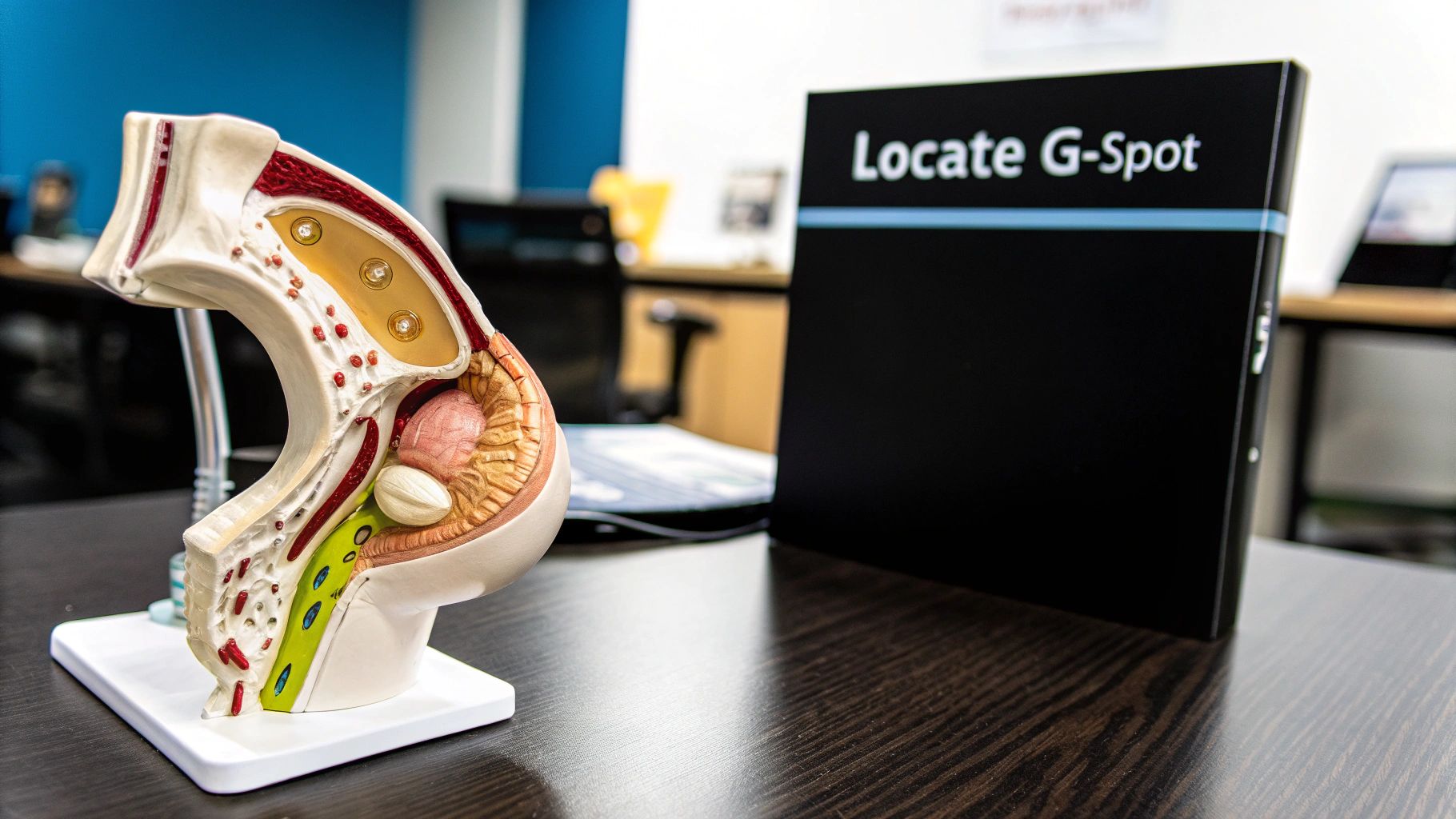
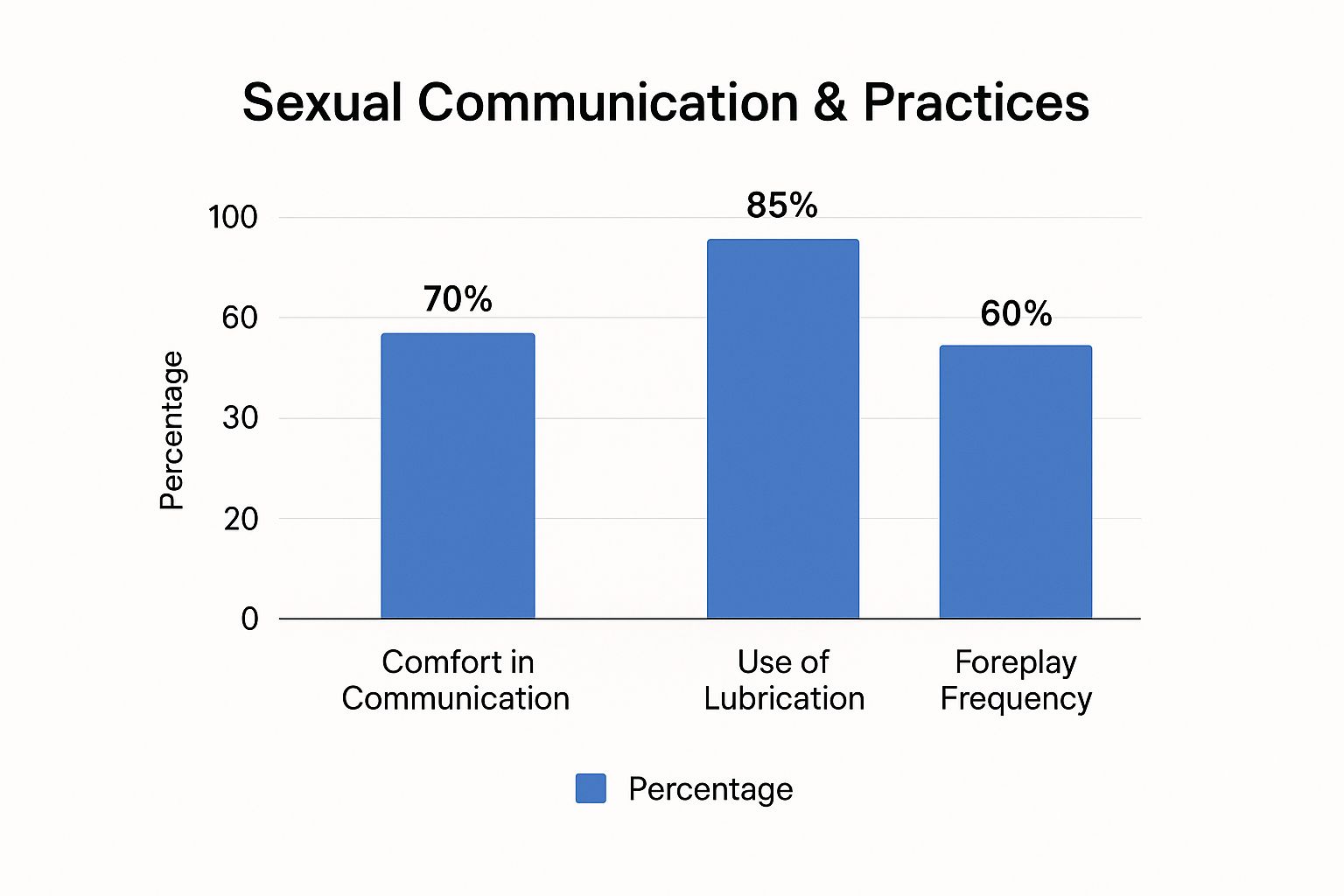





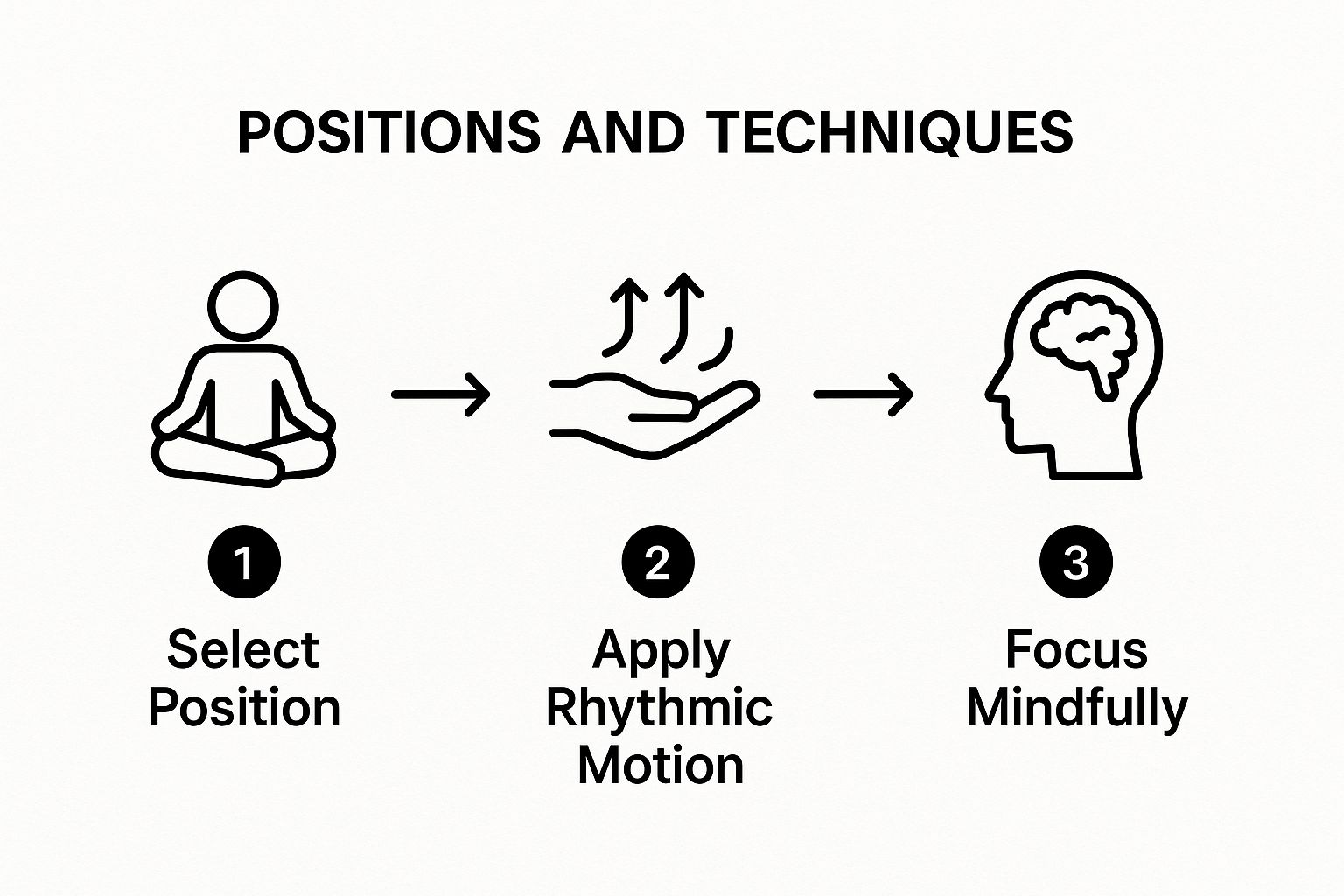


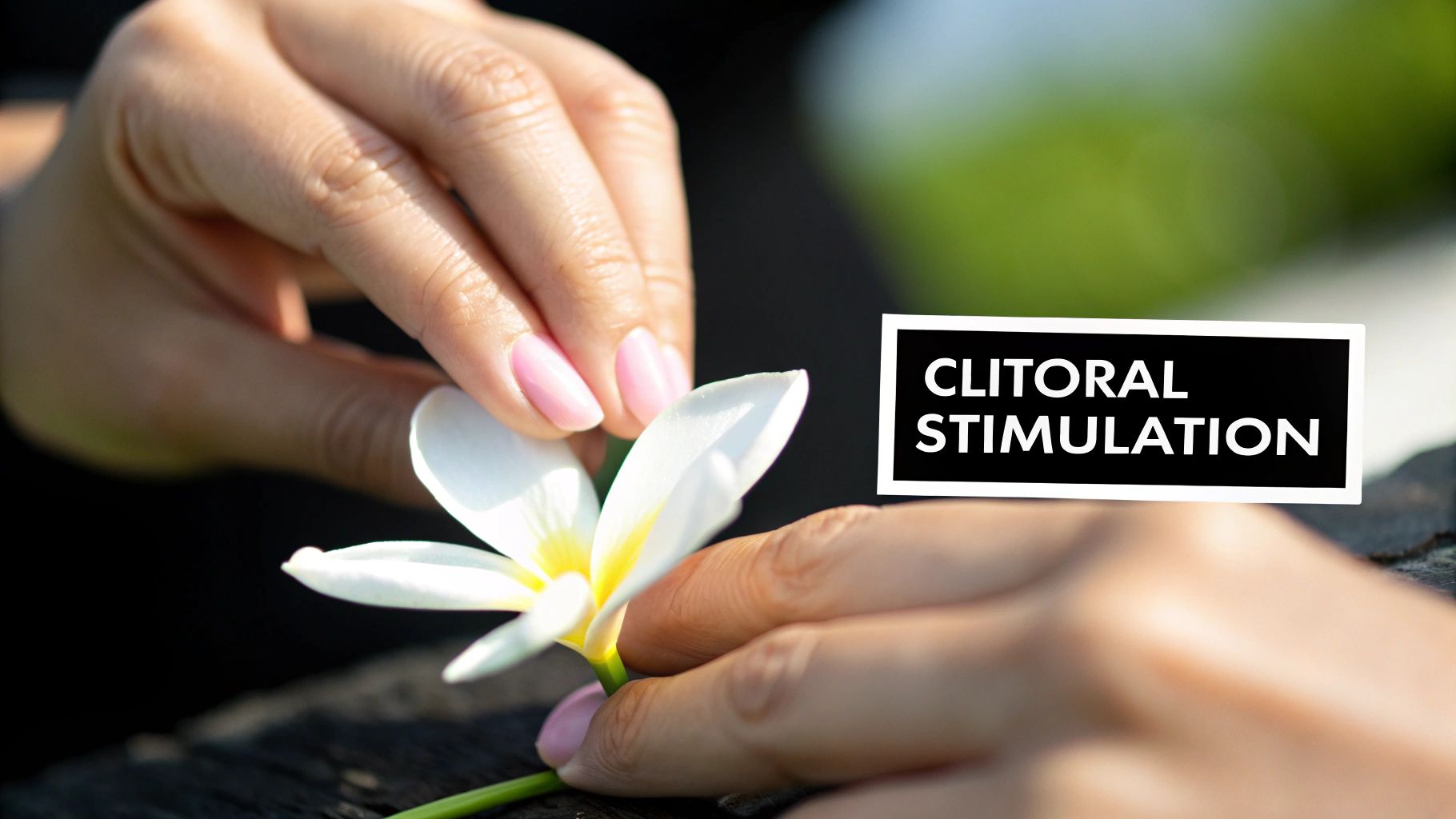





 As the infographic demonstrates, estrogen experiences the most significant percentage increase at 30%, followed by oxytocin at 25%, and then testosterone at 15%. This highlights the important role estrogen plays in the physiological response to arousal.
As the infographic demonstrates, estrogen experiences the most significant percentage increase at 30%, followed by oxytocin at 25%, and then testosterone at 15%. This highlights the important role estrogen plays in the physiological response to arousal.